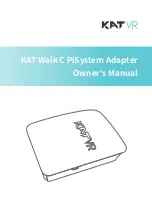
Fabric OS 5.2.x administrator guide 385
Evaluating the fabric
In addition to this section, refer to the
HP StorageWorks SAN Design reference guide
for information on
evaluating the fabric:
http://h18000.www1.hp.com/products/storageworks/san/documentation.html
If there is the possibility that your fabric contains host devices with static PID bindings, you should evaluate
the fabric to:
•
Find any devices that bind to PIDs
•
Determine how each device driver will respond to the PID format change
•
Determine how any multipathing software will respond to a fabric service interruption
If current details about the SAN are already available, it might be possible to skip the Data Collection step.
If not, it is necessary to collect information about each device in the SAN. Any type of device might be
able to bind by PID; each device should be evaluated before attempting an online update. This information
has broad applicability, because PID-bound devices are not able to seamlessly perform in many routine
maintenance or failure scenarios.
1.
Collect device, software, hardware, and configuration data.
The following is a non-comprehensive list of information to collect:
• HBA driver versions
• Fabric OS versions
• RAID array microcode versions
• SCSI bridge code versions
• JBOD drive firmware versions
• Multipathing software versions
• HBA time-out values
• Multipathing software timeout values
• Kernel timeout values
• Configuration of switch
2.
Make a list of manually configurable PID drivers.
Some device drivers do not automatically bind by PID, but allow the operator to manually create a PID
binding. For example, persistent binding of PIDs to logical drives might be done in many HBA drivers.
Make a list of all devices that are configured this way. If manual PID binding is in use, consider
changing to WWN binding.
The following are some of the device types that might be manually configured to bind by PID:
• HBA drivers (persistent binding)
• RAID arrays (LUN access control)
• SCSI bridges (LUN mapping)
3.
Analyze data.
After you have determined the code versions of each device on the fabric, they must be evaluated to
find out if any automatically bind by PID. It might be easiest to work with the support providers of these
devices to get this information. If this is not possible, you might need to perform empirical testing.
Binding by PID can create management difficulties in a number of scenarios. It is recommended that
you not use drivers that bind by PID. If the current drivers do bind by PID, upgrade to WWN-binding
drivers if possible.
The drivers shipping by default with HP/UX and AIX at the time of this writing still bind by PID, and so
detailed procedures are provided for these operating systems in this chapter. Similar procedures can be
developed for other operating systems that run HBA drivers that bind by PID.
There is no inherent PID binding problem with either AIX or HP/UX. It is the HBA drivers shipping with
these operating systems that bind by PID. Both operating systems are expected to release HBA drivers
that bind by WWN, and these drivers might already be available through some support channels.
Work with the appropriate support provider to find out about driver availability.
Summary of Contents for AE370A - Brocade 4Gb SAN Switch 4/12
Page 18: ...18 ...
Page 82: ...82 Managing user accounts ...
Page 102: ...102 Configuring standard security features ...
Page 126: ...126 Maintaining configurations ...
Page 198: ...198 Routing traffic ...
Page 238: ...238 Using the FC FC routing service ...
Page 260: ...260 Administering FICON fabrics ...
Page 280: ...280 Working with diagnostic features ...
Page 332: ...332 Administering Extended Fabrics ...
Page 414: ...398 Configuring the PID format ...
Page 420: ...404 Configuring interoperability mode ...
Page 426: ...410 Understanding legacy password behaviour ...
Page 442: ...426 ...
Page 444: ......
Page 447: ......
















































